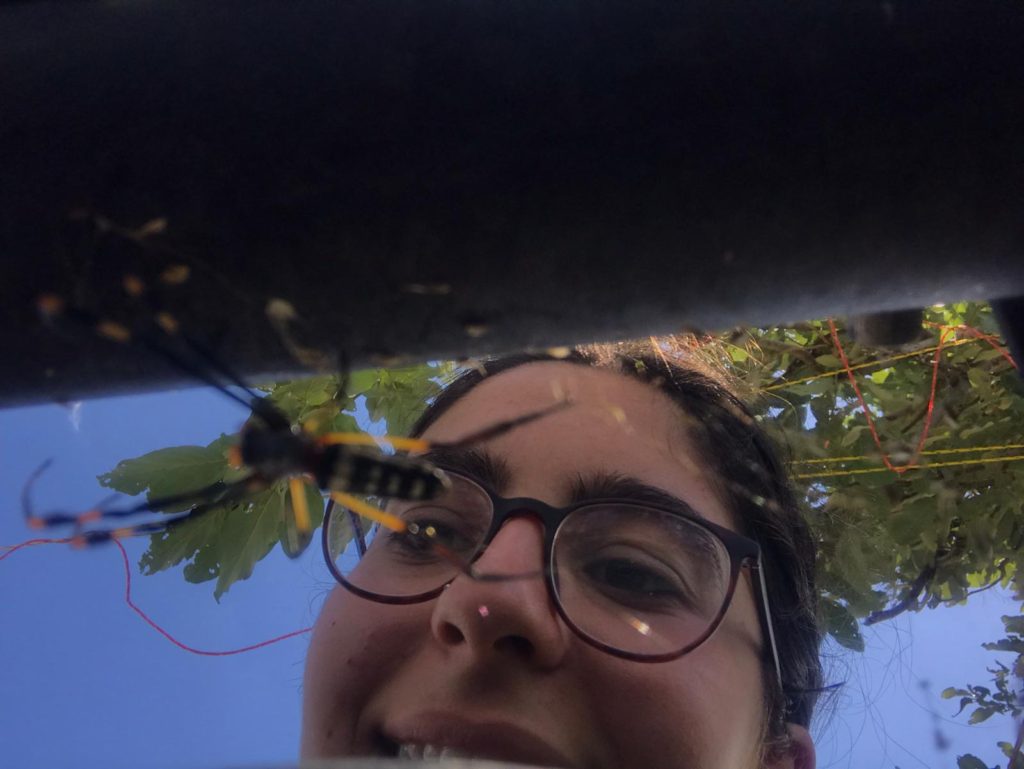by Maddy Busacco, of University of Vermont
When asked what I was most excited to see when in Botswana, not one insect, arthropod, or creature smaller than a bowling ball would have made the list. Instead, I rambled on about how life-changing it will be to see elephants, hyenas, and antelopes in “real life.” But, as Gen said during one of our earliest discussions, the species we end up being most excited about are likely not the ones we expected them to be. And, she was definitely correct. While I was in awe with the aforementioned species, the best and most impactful days in Mababe surrounded the discovery and sightings of spiders and grasshoppers.
It was Grinnell Day, which immediately signaled a busy day as we had to record 100+ species we observed and make a detailed write-up of the day. I started off that morning hoping to see as many “exciting” species as possible, giving me an easy writing topic and less trouble identifying species. But, my favorite species of the day ended up being a very tiny, very colorful, very difficult to identify grasshopper. This little guy found his way into our vehicle when we were driving through a thicker portion of mixed age mixed species. Because of his lime green and cherry red coloring, and our inability to find him in our insect section of the field guide, we referred to him as “candy grasshopper.” He hung out on Grace’s field journal for quite some time, and his coloring and tiny stature brought us all genuine joy during his stay. Immediately upon returning to camp, we looked through the insect guide to identify the species, determining it was Brachytypus rotundifrons.
My favorite transect day was the first time doing T4 in Mababe, which we coined “spider day.” It is geographically beautiful, with small but somewhat rolling hills (rare in the Delta!), lush green vegetation, and multiple watering holes. But, besides the resident male wildebeest and a few elephants, wildlife sightings are few and far between, making our herbivore transects somewhat lackluster. Instead, we focused our efforts on the smaller species. We began noticing massive intricate webs, resembling that of a volleyball net hanging between two meter tall trees. Being from New York, where spider webs are small and in a bush or the corner of my room, these were shockingly large, as they were 1-2 meters in length. This particular web belonged to the Golden Orb Web spider, which we learned has a “reasonable” amount of venom and is named after its signature gold webbing, which alerts larger species of the webs existence (She does not want to do all that work to get destroyed!) We also spotted garden spiders, which are black and white. Their webs have a squiggly white line of silk down the middle, also to alert species of its presence. We spent the entirety of the day stopping to look at monstrous intricate webs, reading about the spiders of the delta in our field guides, and discussing how shocked and excited we were to see all of these spiders, who stole the day.
These wildlife sightings were unanticipated and unexpected, making them all the more interesting. As someone who would have never considered myself a big “bug” person (yes, I know bugs aren’t a legitimate classification, but alas, sometimes I am just a generalizing layperson), these encounters quickly became some of my favorite experiences in the Okavango Delta.

